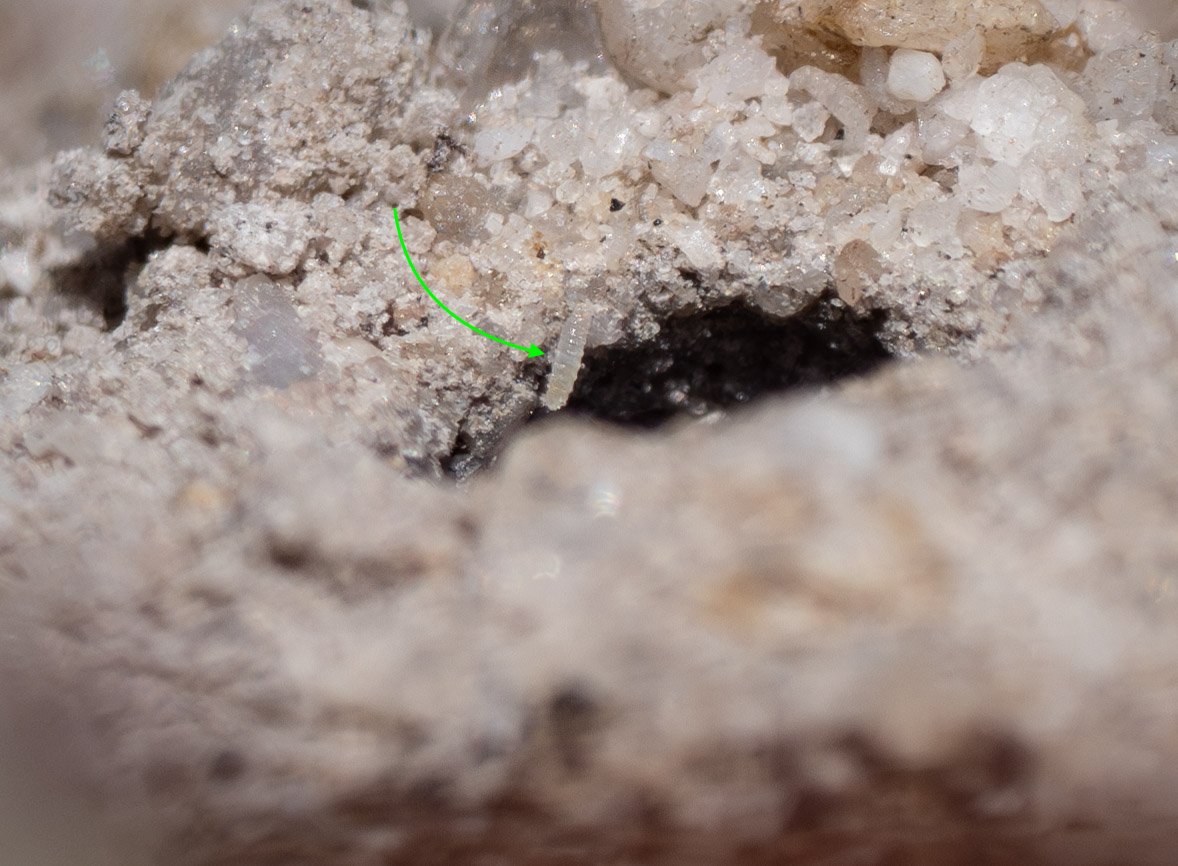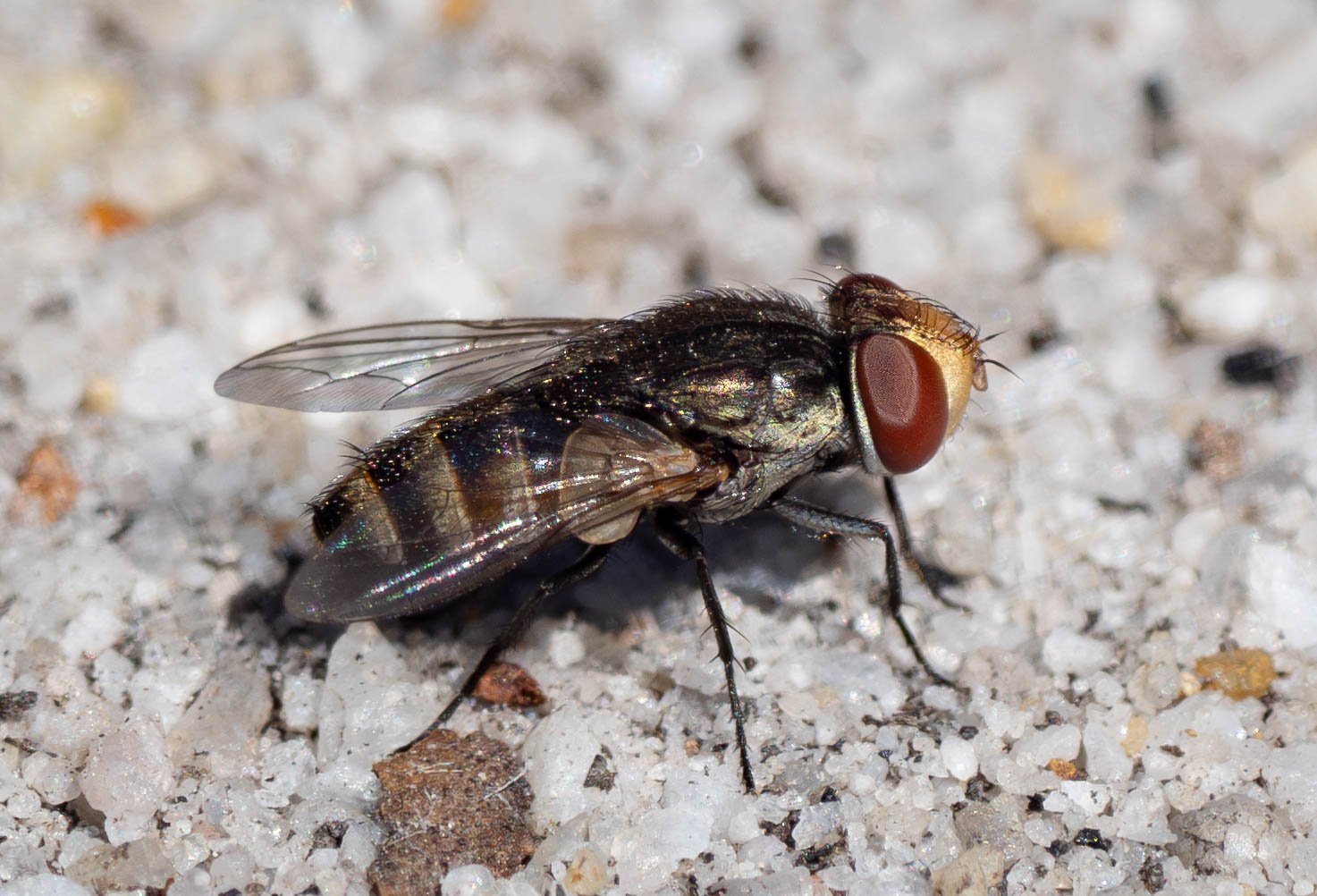
No prizes for guessing why these little pests are called satellite flies! Incoming, prey-carrying wasps are routinely orbited by a hovering miltogrammine fly … or two. The moment the wasp enters her nest, the flies land on the rim of the burrow and will often disappear inside.

This photo was taken immediately after a satellite fly landed briefly on the rim of the burrow. I watched the wriggling little fly larva (arrow … and yes, it’s rightly named a maggot) hang there for a few seconds, before it dropped into the nest opening. Once inside the burrow it would seek out a paralysed beetle. Ultimately, if it successfully evades the attention of the home owners, it will consume the food stashed in a Cerceris chamber, kill the host young, and ultimately pupate within the safety of the underground nest.

It’s an effective strategy. Miltogramminae (SARCOPHAGIDAE) are “major mortality factors for many if not most aculeate (stinging) wasp species” (Marshall, 2012, p. 385).



